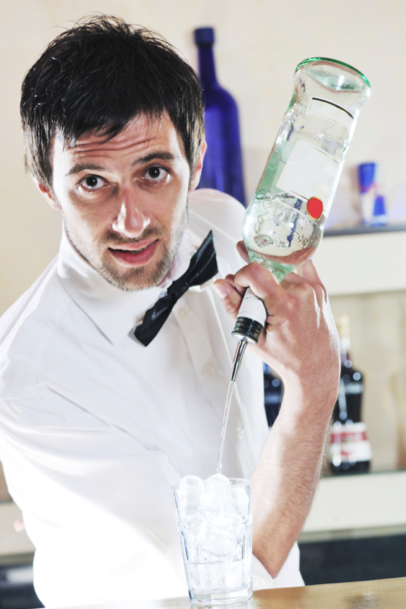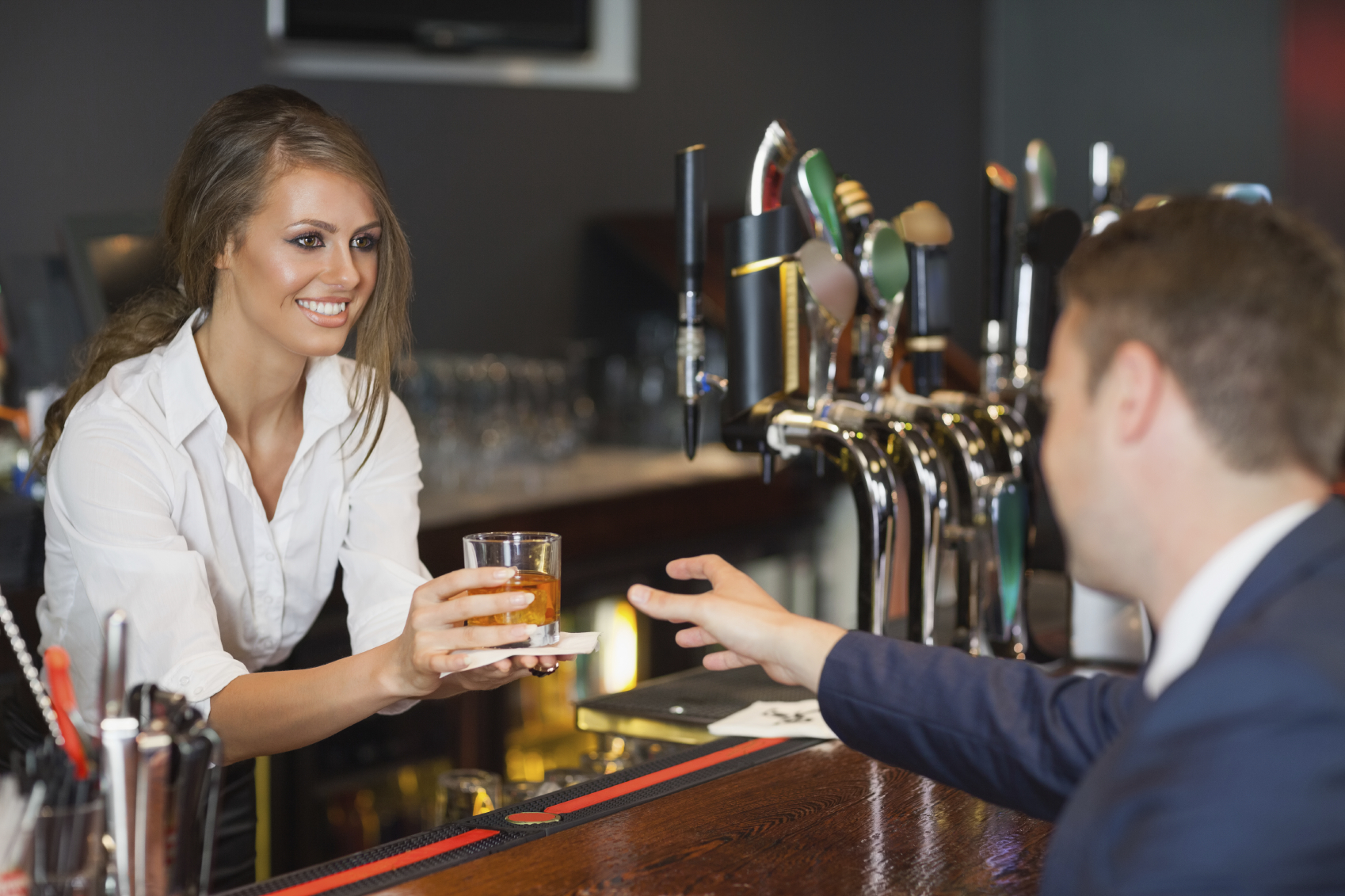In prior Secret Shopper Chronicles we focused on bartender over pouring. Why so much attention to this issue? Because if you have over pouring going on, and most of my clients do, and if you eliminate it, you will significantly increase your bar profits.
Today, we’ll look at what else our spotters commonly find during covert visits to client bars. First, I have to tell you, we often find bartenders who are simply great at their job. Who have a passion for what they do. So, one huge benefit of secret shopper reports is they give you an opportunity to thank your superstars. A later blog post will give you tips on staff feedback. But for now, let’s just say the more feedback the better, as long as the observations are fair, sincere, and respectful.
On to spotter observations….
- Bartender theft. Sad, but too often true. The Internet is full of doomsday articles about bartenders stealing. Our spotters have found a wide range of theft, from outright cash sales not being rung-in during the entire shift, to the more common practice of giving away free drinks. In the near future, look for our post on ways to prevent bartender theft—it’s a long list.
- Bartenders who ignore customers. The spotter and other newly seated customers arrive at the bar, but the bartender doesn’t acknowledge their presence. The bartender notices the customer but simply carries on whatever they’re doing. Often the bartender is chatting with a friend, checking their phone, or simply not in the mood to engage a new customer. It infuriates the spotters!! Keep in mind, most of my spotters are current or former bar managers.
- Bartenders who are rude. We’re not talking about rude as in ignoring, but rather, in your face rude. Think angry worker. Enough said.
- Bartenders who aren’t a people person – at least that’s how we perceive them. The bartender might be responsive, and properly perform their duties, but just doesn’t smile or engage the customer. With that said…we have found to our pleasant surprise, that sometimes when a client shares our observations with the staff member, the employee comes alive and values their customer (or job).
- Bartenders and security not carding customers who clearly look under 21 years old. One of my spotters took her friend, a young-looking minor, to a bar/restaurant. The bartender asked the minor what she wanted to drink without first asking for ID. We often see questionable carding practices. With the California statute that holds bars liable for incidents involving minors, and increased enforcement programs, more than ever bars need to run a tight ship with minors. We’ll soon blog on the risks associated with serving minors.
- Bartenders who are customer favorites, yet do not over pour. It’s always fun to share secret shopper reports with an owner who assumed their most popular bartender is liked by customers because the bartender over pours or gives away free drinks – only to discover that popular bartender is also their most honest and professional one. Customers like bartenders who give them great service and make genuine contact. Kudos to these bartenders.
- Bartenders who aren’t inclined to ask a customer if they want a refill. It’s interesting how often spotters record they would have ordered another drink if the bartender ever came back. Spotters may have an empty drink for 10 minutes or more without being asked if they want another. We aren’t for pushing drinks, but we are for constant attentiveness and monitoring.
- Bartenders who make popular cocktails with the wrong ingredients. Our reference to properly build a cocktail are the recipes taught in bartending schools. In the same bar, we find cocktails (Mai Tai, Adios, etc.) made different ways.
- Bartenders who make their own specialty cocktail. Why is this a problem? It’s not if management has approved the drink and its price. Typically the bartender’s personal specialty cocktail contains premium liquors or liqueurs, lots of alcohol, and is priced waaay too low.
- Bartenders rarely suggestive sell. Meaning they do not ask the customer if they’d like something from the food menu. This is a lost opportunity to make money and help slow intoxication.
- Bartenders very rarely upsell. Meaning the bartender doesn’t ask the customer if they’d like a premium liquor in their drink, as in “would you like that with Grey Goose?” Another missed opportunity. If you sell your well vodka tonic for $8 and use the least expensive well vodka, your net profit is around $7.60. If that drink was upsold to Goose, and you sell your Goose for $12, your net profit is around $10.20. An increase in profit of $2.60 for every such upsell.
- Bartender uses a jigger but then trails the liquor. I’m not a huge fan of jiggers as a general practice, unless you’re a craft bar. A separate jigger blog will explain why, but for now, suffice to say: a jigger does more harm than good when the bartender fills the jigger and as the bartender dumps the jigger the bartenders trails the jigger dump with more pouring. This is the norm at jigger bars we visit.
- Bartenders drinking alcohol on the job. Do you think a bartender who is impaired is more or less likely to give away drinks? Do you think a bartender who is impaired is more or less likely to professionally deal with an angry customer? Do you think a bartender who is impaired is more or less likely to cut off a drunken customer? Do you think a bartender who is impaired is more or less likely to be a liability risk to your business?
- Bartenders who serve customers who are completely drunk – and it’s obvious. We have even seen a drunken customer pass out, only to be awakened and asked if they want another cocktail. Oh my.
- Bar staff who do not clear and clean (and keep dry) the bar counter. Usually when we find this, it’s reflective of a much broader customer service problem.
- Bartenders who ignore house policies. Different bars have different policies. Sometimes these polices are ignored. Maybe the policy is, no eating behind the bar, or no use of cell phones while working, or place a receipt (or updated receipt) in front of customer after every transaction. If staff are violating a “small” policy, it’s likely they are shunning more critical ones, as well.
- Bar uses several different pour spots. One bar had 12 different style pour spouts. Not all pour spots are created equal. There are generally three different pour rates, with some extra-fast pour spots on top of those. I test pour spouts (yeah, I know, get a life). I’ve tested client spouts that have poured as fast as .82 ounces per second, to as slow as .48 ounces per second.
- Filthy (and unstocked) restrooms. We take photos to show just how bad it can get.
- Unprofessional security staff. Rude, aggressive, too physical, or simply not engaged in job, looking the other way, and waiting for a check. We’ve seen it all. Undisciplined security could be your Achilles heel. Studies show security is implicated in a significant percentage of assaults or batteries. (Tomsen, Homel, and Thomenny, 1991; Tomsen, 2005; 1997; Stockwell, 1997; Homel and Clark, 1994)
We strongly encourage you to read your Yelp and Google reviews. Multiple studies (including the Harvard Business School Study, 2011; and the Berkeley Study 2012) have shown the financial benefits from having a higher Yelp rating. If you have a security department, it’s likely your biggest opportunity to increase your Yelp rating is to improve the professionalism of your security. If the majority of your sales are alcohol, but you have no security, it’s likely your biggest opportunity to increasing your Yelp rating is improving the professionalism (attitude, attentiveness, friendliness) of your bartenders.
Using properly trained and instructed spotters, and then taking corrective action (or sharing positive feedback with staff) based on spotters’ observations, will increase your profits, improve your customer experience, and guard both your ABC License, and your insurance premiums.

